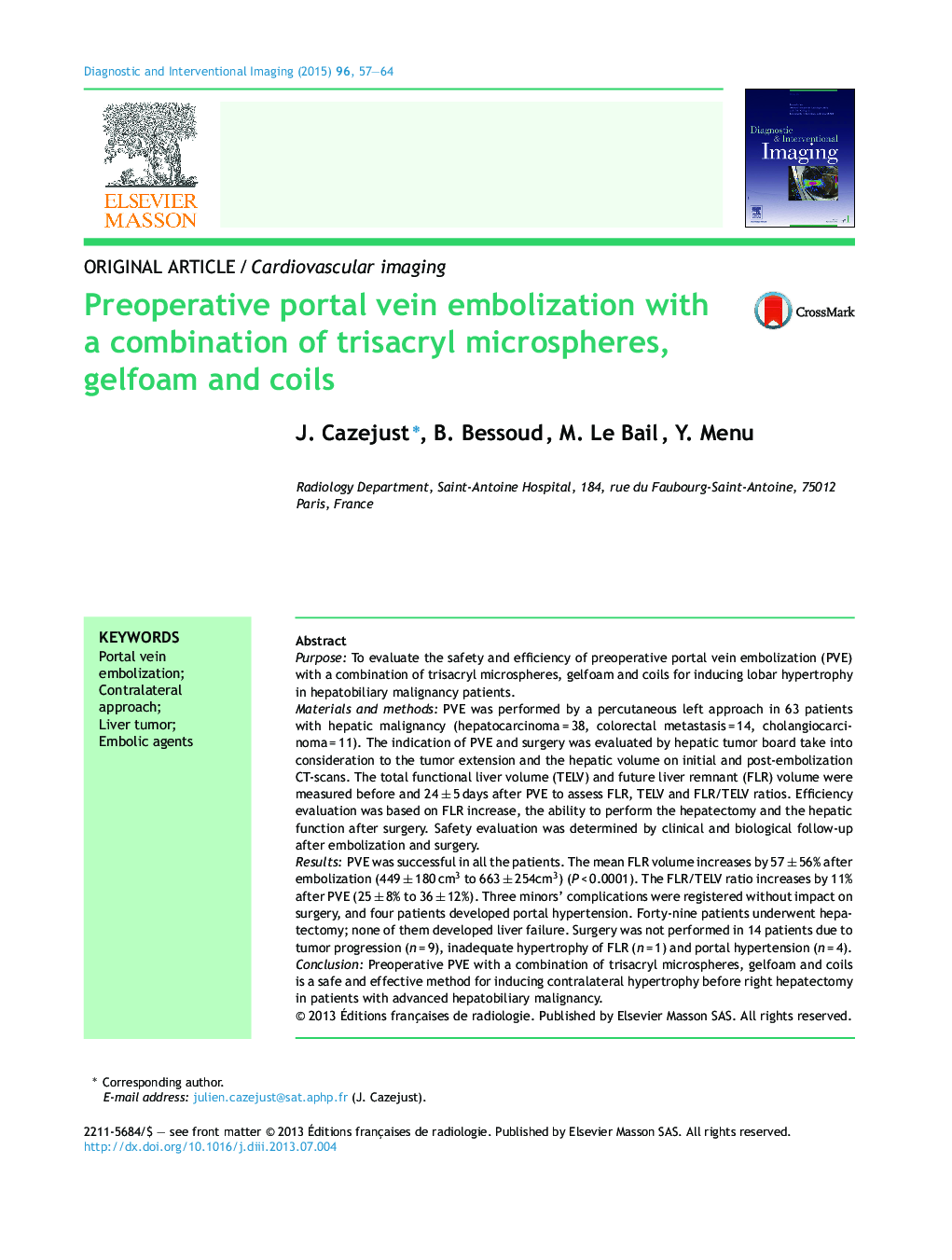| Article ID | Journal | Published Year | Pages | File Type |
|---|---|---|---|---|
| 5880236 | Diagnostic and Interventional Imaging | 2015 | 8 Pages |
PurposeTo evaluate the safety and efficiency of preoperative portal vein embolization (PVE) with a combination of trisacryl microspheres, gelfoam and coils for inducing lobar hypertrophy in hepatobiliary malignancy patients.Materials and methodsPVE was performed by a percutaneous left approach in 63 patients with hepatic malignancy (hepatocarcinoma = 38, colorectal metastasis = 14, cholangiocarcinoma = 11). The indication of PVE and surgery was evaluated by hepatic tumor board take into consideration to the tumor extension and the hepatic volume on initial and post-embolization CT-scans. The total functional liver volume (TELV) and future liver remnant (FLR) volume were measured before and 24 ± 5 days after PVE to assess FLR, TELV and FLR/TELV ratios. Efficiency evaluation was based on FLR increase, the ability to perform the hepatectomy and the hepatic function after surgery. Safety evaluation was determined by clinical and biological follow-up after embolization and surgery.ResultsPVE was successful in all the patients. The mean FLR volume increases by 57 ± 56% after embolization (449 ± 180 cm3 to 663 ± 254cm3) (P < 0.0001). The FLR/TELV ratio increases by 11% after PVE (25 ± 8% to 36 ± 12%). Three minors' complications were registered without impact on surgery, and four patients developed portal hypertension. Forty-nine patients underwent hepatectomy; none of them developed liver failure. Surgery was not performed in 14 patients due to tumor progression (n = 9), inadequate hypertrophy of FLR (n = 1) and portal hypertension (n = 4).ConclusionPreoperative PVE with a combination of trisacryl microspheres, gelfoam and coils is a safe and effective method for inducing contralateral hypertrophy before right hepatectomy in patients with advanced hepatobiliary malignancy.
